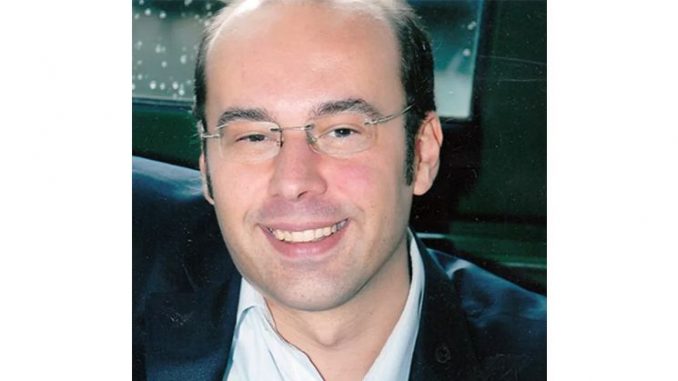
Airway management is a major responsibility for the anesthesiologist. Therefore, the difficulty in managing the airway is the single most important cause of major anesthesia-related morbidity and mortality. The frequency of difficult intubation varies and in high-risk patients it is up to 20%.
The Hyomental Distance Ratio (HMDR) is the ratio between the Hyomental Distance (HMD), i.e., the distance between the hyoid bone and the tip of the chin, at the extreme of head extension (HMDe) and the one in the neutral position (HMDn).
Previous studies have reported on various criteria for the airway assessment to predict the difficult endotracheal intubation before anesthesia. Today, there is no general agreement on the application of a single diagnostic predictor of difficult intubation.
Our study aimed at exploring the predictive value, sensitivity and specificity of HMDe, HMDn and HMDR in predicting difficult endotracheal intubation.
A prospective study included 262 patients that underwent elective surgical operations. Moreover, the following parameters were observed as possible predictors of difficult intubation: HMDR, HMDe, HMDn, Mallampati score and Body Mass Index (BMI).
The cut-off points for the difficult intubation predictors were: HMDe<5,3cm, HMDn≤5,5cm and HMDR≤1,2.
Difficult intubation was present in 13 patients (5% of the total number of patients). As for the frequency of difficult intubation, no considerable difference was recorded concerning the sex, age and BMI of the patients.
HMDR demonstrated the best diagnostic performances in assessing difficult intubation. HMDR showed 95.6% sensitivity and 69.2% specificity. Furthermore, HMDe reported lesser sensitivity (75.9%), i.e., the possibility to mark the patients with difficult intubation, than the previously mentioned parameter in assessing difficult intubation. However, it showed similar specificities (61.5%), i.e., the possibility to mark the patients without difficult intubation. In addition, the HMD sensitivity in the neutral position for predicting difficult intubation was 30.8%, while HMD specificity was 83.1%.
The results of our investigation showed the reliability of HMDR and HMDe in predicting difficult intubation.
HMDR can be used in everyday work of anaesthesiologists, since its values<1.2 are a reliable predictor of difficult intubation.
Serbian language summary
Hiomentalna distanca pri različitim položajima glave i odnos hiomentalne distance kao prediktori otežane intubacije
Obezbeđivanje disajnog puta je osnovni zadatak i velika odgovornost za anesteziologa. Otežano obezbeđivanje disajnog puta je pojedinačno najvažniji uzrok morbiditeta i mortaliteta povezanih sa anestezijom.
Učestalost otežane intubacije varira i kod visoko rizičnih pacijenata dostiže i do 20%.
Odnos hiomentalne distance (Hyomental Distance Ratio – HMDR) je odnos između hiomentalne distance – HMD (rastojanje od hioidne kosti do vrha brade) u položaju maksimalne ekstenzije vrata (HMDe) i u neutralnom položaju vrata (HMDn).
Tokom proteklih decenija razvijeni su različiti testovi i merenja antropometrijskih i kraniometrijskih parametara u cilju blagovremenog predviđanja mogućnosti pojave poteškoća pri intubaciji, kako bi se izvršila adekvatna priprema anesteziologa i materijala. Ne postoji opšta saglasnost o primeni jedinstvenog dijagnostičkog prediktora otežane intubacije.
U ovoj studiji želeli smo da ispitamo prediktivnu vrednost, senzitivnost i specifičnost HMDe, HMDn i HMDR u predviđanju pojave otežane endotrahealne intubacije.
Prospektivna studija je obuhvatila 262 pacijenta koji su podvrgnuti elektivnim hirurškim intervencijama. Pored HMDR, HMDe i HMDn kao mogući prediktori otežane intubacije ispitivani su Malampati skor i Indeks telesne mase (BMI).
Kao pokazatelj otežane intubacije ispitivane su vrednosti HMDe<5,3 cm, HMDn≤5,5 cm i HMDR≤1,2.
Otežana intubacija bila je prisutna kod 13 bolesnika (5% od ukupnog broja pacijenata). U pogledu učestalosti otežane intubacije nije bilo statistički značajne razlike u odnosu na pol, starost i BMI pacijenata.
U našem istraživanju HMDR se izdvojio kao najbolji prediktor otežane intubacije. Njegova senzitivnost je bila 95,6%, a specifičnost 69,2%. HMDe je pokazao manju senzitivnost (75.9%) (mogućnost da se izdvoje pacijenti sa otežanom intubacijom) od HMDR u predviđanju pojave otežane intubacije, ali je ispoljio približno jednaku specifičnost, (61.5%) (mogućnost da se izdvoje pacijenti bez otežane intubacije). Senzitivnost HMDn u predviđanju otežane intubacije bila je 30.8%, a specifičnost 83.1%.
Rezultati našeg istraživanja pokazali su pouzdanost HMDR and HMDe u predviđanju pojave otežane intubacije. Odnos hiomentalne distance se može koristiti u svakodnevnom radu anesteziologa jer su njegove vrednosti manje od 1,2 pouzdan prediktor otežane intubacije.
Reference
Kalezić N, Lakićević M, Miličić B, Stojanović M, Sabljak V, Marković D. Hyomental distance in the different head positions and hyomental distance ratio in predicting difficult intubation. Bosn J Basic Med Sci. Vol 16, No 3 (2016) pages 232-236. doi: 10.17305/bjbms.2016.1217. [Epub ahead of print]
Leave a Reply